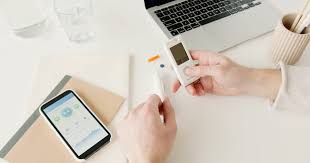Medication Adherence Devices: Enhancing Patient Compliance and Health Outcomes

Medication adherence is a crucial aspect of healthcare management, particularly for patients with chronic conditions. The World Health Organization (WHO) defines medication adherence as the extent to which a person’s behavior—taking medication, following diets, and executing lifestyle changes—aligns with the recommendations from a healthcare provider. Unfortunately, non-adherence to prescribed medication regimens is a pervasive issue globally, with studies estimating that up to 50% of patients with chronic diseases do not take their medications as prescribed. This non-compliance contributes to increased hospitalizations, complications, and healthcare costs.
To address these challenges, medication adherence devices have been developed to help patients manage their medication routines more effectively. These devices range from simple pill reminders to advanced electronic systems that track medication usage in real-time. This article delves into the different types of medication adherence devices, their functionalities, benefits, challenges, and the future of this important field.
1. The Importance of Medication Adherence
Medication non-adherence is a global public health problem with significant consequences. According to the National Institute on Aging (NIA), more than half of the patients with chronic diseases do not adhere to their prescribed medication regimens. Non-adherence can be intentional or unintentional:
- Intentional non-adherence occurs when patients consciously choose not to take their medication, often due to side effects, perceived ineffectiveness, or a lack of understanding of the importance of the medication.
- Unintentional non-adherence happens when patients forget to take their medication, struggle with complex regimens, or experience confusion over when or how to take their medicine.
The consequences of non-adherence include:
- Worsened health outcomes: Non-compliance can lead to disease progression, complications, and hospitalizations.
- Increased healthcare costs: Poor medication adherence contributes to the unnecessary burden on healthcare systems due to additional doctor visits, emergency room admissions, and prolonged treatments.
- Decreased quality of life: Non-adherence negatively impacts a patient’s ability to manage their condition, leading to a lower quality of life.
The role of medication adherence devices is to address these challenges by helping patients follow their prescribed regimens, ultimately improving their health outcomes.
2. Types of Medication Adherence Devices
Medication adherence devices are designed to aid patients in remembering, taking, and managing their medications. These devices vary widely in terms of complexity, technological features, and the conditions they are designed to manage. Below are some of the most common types of adherence devices:
a. Pillboxes and Medication Organizers
One of the most basic forms of medication adherence devices is the pillbox. These devices typically consist of compartments labeled with days of the week and specific times of day to help patients organize their medications. Pillboxes are particularly helpful for patients who take multiple medications daily. They are inexpensive, easy to use, and widely available.
- Pros: Simple to use, affordable, and effective for managing multiple medications.
- Cons: Do not provide reminders or track whether a patient has taken the medication, making them less effective for patients with memory issues.
b. Medication Reminder Systems
These devices go beyond pillboxes by incorporating auditory or visual reminders to alert patients when it is time to take their medication. Some may use an alarm that sounds at the scheduled time, while others may flash a light or send a notification to a smartphone.
- Pros: Help patients remember to take their medication at the correct time, especially useful for those who have difficulty with time management or memory.
- Cons: May not ensure that patients actually take their medication, as it only serves as a reminder.
c. Smart Pill Dispensers
Smart pill dispensers are more advanced versions of medication organizers. These devices can be programmed to release the correct dose of medication at the designated time. Some smart dispensers are equipped with Bluetooth or Wi-Fi connectivity, allowing healthcare providers or caregivers to monitor medication adherence remotely.
- Pros: Tracks medication usage, provides automatic dispensing, and sends real-time data to healthcare providers, caregivers, or family members.
- Cons: More expensive than basic pillboxes, and may require technical support for setup.
d. Electronic Medication Monitors (EMMs)
Electronic medication monitors are sophisticated devices that track whether a patient has opened their medication container or taken the prescribed dose. These monitors often feature sensors that record the date and time of each opening, allowing healthcare providers or caregivers to review medication adherence data.
- Pros: Provides detailed adherence data, helping identify patterns of non-compliance and facilitating early intervention.
- Cons: Can be expensive, and some devices may require a subscription or ongoing maintenance.
e. Smart Medication Packaging
Smart packaging includes pill bottles with integrated sensors or chips that can detect when the bottle has been opened or a dose has been dispensed. These smart bottles often pair with mobile apps that send reminders to patients and notifications to caregivers or healthcare providers.
- Pros: Offers real-time tracking of medication adherence, provides reminders, and allows caregivers to monitor progress remotely.
- Cons: Can be costly, and there may be challenges in integrating the technology with existing healthcare systems.
f. Digital Pills
Digital pills are an innovative type of medication that contains a small sensor embedded within the pill itself. When the pill is ingested, the sensor is activated and sends a signal to a wearable device or smartphone app, indicating that the patient has taken the medication.
- Pros: Provides highly accurate tracking of medication adherence and is tamper-proof, as the sensor can only be activated once the pill is ingested.
- Cons: Expensive, and may not be available for all types of medications.
3. Benefits of Medication Adherence Devices
The primary goal of medication adherence devices is to enhance patient compliance and, by extension, improve health outcomes. Here are some of the key benefits:
a. Improved Medication Adherence
By providing reminders, organizing medications, and tracking usage, adherence devices make it easier for patients to remember and follow their prescribed medication regimens. For patients with chronic conditions or complex medication schedules, these devices offer invaluable assistance in ensuring proper adherence.
b. Real-Time Monitoring and Data Collection
Many adherence devices enable healthcare providers and caregivers to monitor medication adherence in real time. This data can be used to identify patterns of non-adherence, allowing for early intervention and personalized adjustments to treatment plans. This helps reduce unnecessary hospitalizations and improves patient outcomes.
c. Increased Patient Independence
For patients managing chronic conditions, medication adherence devices can increase independence by reducing the need for constant caregiver intervention. Devices that automatically dispense or remind patients to take their medications empower individuals to manage their own health.
d. Better Health Outcomes and Reduced Healthcare Costs
By improving medication adherence, these devices can lead to better disease management, fewer complications, and fewer hospital admissions. As a result, healthcare costs associated with poor medication adherence—such as emergency room visits and long-term treatments—can be significantly reduced.
4. Challenges in Implementing Medication Adherence Devices
Despite the clear benefits, there are several challenges to the widespread adoption of medication adherence devices:
a. Cost
High-tech medication adherence devices can be expensive, making them inaccessible to some patients. For example, digital pills or smart dispensers may not be affordable for individuals without adequate insurance coverage. While basic pillboxes and reminder systems are relatively inexpensive, more sophisticated devices often come with a high price tag.
b. Patient Resistance to Technology
Some patients, particularly older adults, may be resistant to using technology. This reluctance can be a barrier to the adoption of more advanced adherence devices, such as smart pill dispensers or digital pills. These patients may require additional training or support to feel comfortable using the devices.
c. Privacy Concerns
Many adherence devices collect personal health data, such as medication usage and adherence patterns. This raises concerns about data privacy and security, particularly if the data is shared with third parties, such as healthcare providers or pharmaceutical companies.
d. Device Malfunctions
Like any piece of technology, medication adherence devices are prone to malfunctions or technical failures. For instance, a pill dispenser might fail to release the correct dose, or a smart pill bottle might not properly record medication usage. In such cases, patients may be at risk of missing doses or taking incorrect amounts of medication.
5. The Future of Medication Adherence Devices
The future of medication adherence devices lies in advancements in technology, particularly in the fields of artificial intelligence (AI), the Internet of Things (IoT), and personalized medicine. Here are some potential developments:
- AI-Powered Devices: Artificial intelligence can be integrated into medication adherence devices to provide personalized reminders based on a patient’s medication history and preferences. AI could also help predict when patients are most likely to forget to take their medication and send targeted reminders.
- Wearable Devices: Future adherence devices could integrate with wearable technology, such as smartwatches, to monitor not only medication adherence but also other health metrics (e.g., blood pressure, heart rate). This would allow healthcare providers to manage a patient’s health more holistically.
- Telemedicine Integration: As telemedicine continues to grow, medication adherence devices could be integrated into virtual healthcare platforms. This would enable real-time monitoring, remote consultations, and personalized treatment plans, all while ensuring better patient compliance.
Conclusion
Medication adherence devices are transforming the way patients manage their medication regimens. By providing reminders, organizing medications, and offering real-time monitoring, these devices help patients improve their adherence to prescribed therapies. While challenges such as cost, resistance to technology, and privacy concerns exist, the continued development of innovative adherence tools holds great promise for improving health outcomes and reducing the burden on healthcare systems. As technology advances, medication adherence devices will likely become more accessible, affordable, and effective, offering hope for better health management for patients with chronic conditions worldwide





